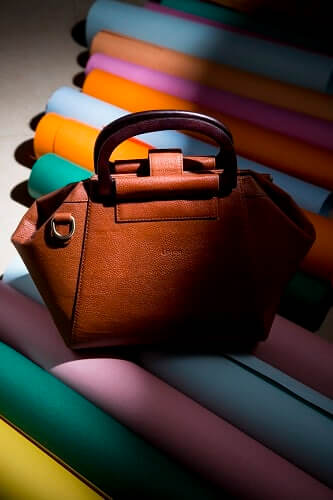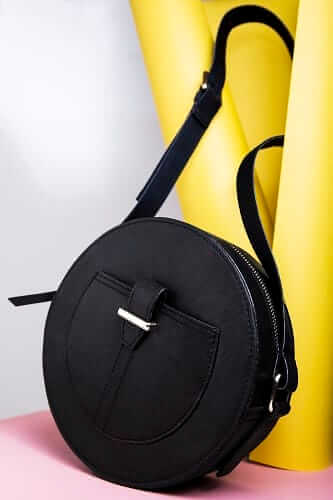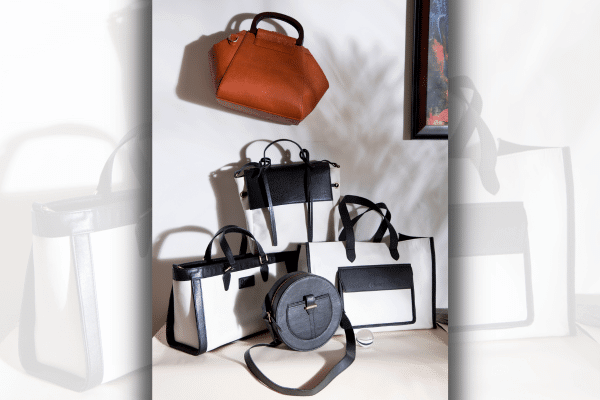Think twice before throwing out your banana peel – designers are turning them into fashion wonders. The latest addition to animal leather alternatives, banana leather, joins an army of innovative designs helping combat the fashion industry’s immense environmental impact. Not only is banana leather vegan and cruelty-free, the novel substitute is helping ease the colossal burden of the global fashion industry on natural resources.
Redefining materials of the future, banana leather has made its way onto the global fashion scene as a new staple for sustainable fashion enthusiasts and a saviour for countless agricultural communities. Recently, Indian fashion brand Rashki partnered with Banofi Leather to launch a unique range of handbags made using banana leather. Made from banana crop waste, the bags are crafted by Indian artisans as a sustainable alternative to animal and plastic leather.

Upcycling banana crop waste is amongst the many methods for manufacturers to ‘un-leather’ and still be à la mode. As more individuals choose to adopt mindful fashion activities, innovative alternatives that support sustainable living are being welcomed with open arms by both buyers and brands.
Renowned French fashion house Hermès recently unveiled the classic Victoria travel bag showcasing a new faux-leather alternative made from – wait for it – mushrooms. The fungi fabric is an eco-friendly alternative pioneered by the brand, bearing in mind the fashion heavyweight is well-reputed for the quality and luxury of their leather goods.

Not far from home, Kanpur-based brand Phool is redefining what’s in season as it is taking flowers to make Fleather, another fascinating fabric substitute. Collaborating with PVH Corporation, the parent company of Calvin Klein and Tommy Hilfiger, the brand is taking flowers from temple waste and manufacturing a material which can be used as an alternative to animal leather.
Sustainability powerfully emerges as an ongoing concern for the global fashion industry with escalating pressure for brands to provide sustainable fashion options that adequately mould to contemporary consumer tastes. As tenacious trends and fast fashion infest the global fashion industry, an uproar by conscious customers is compelling brands to act accordingly.

Australia’s sustainable fashion landscape is experiencing an increased demand with an expected growth of 8.23% for women’s sustainable fashion and 6.8% for men’s sustainable fashion by 2026. Similarly, as per a report by ResearchAndMarkets.com, India’s sustainable fashion market has been projected to grow by 10.6% between 2021 and 2026. This increased interest for sustainable style is pushing fashion brands to put the planet first before readying the runway.

The fashion industry is grappling in the midst of an environmental crisis as unsustainable manufacturing activities cause significant harm to the earth.
Producing animal leather takes an enormous environmental toll with tanning process requiring the use of hazardous chemicals, vast amounts of energy and water and mammoth greenhouse gas emissions. Typical leather manufacturers use 10,000 litres of water and over 100kgs of carbon dioxide per metre, to make a bag from cowhide. The production of banana leather tackles this eye-watering usage by reducing water consumption and carbon footprint by 85%.
Ultimately, the production of animal leather alternatives such as banana leather successfully responds to a growing global consciousness for sustainable living and becomes a key player in confronting unsustainable production activities.

The world of textiles will forever be draped in the development of sustainable substitutes as increasing consumer awareness and evolving tastes drive vogue advancements. Nonetheless, what has never been clearer is how fashion needs to spearhead the fight for a sustainable future.
READ ALSO: Organic waste composting – what apartment dwellers can do




